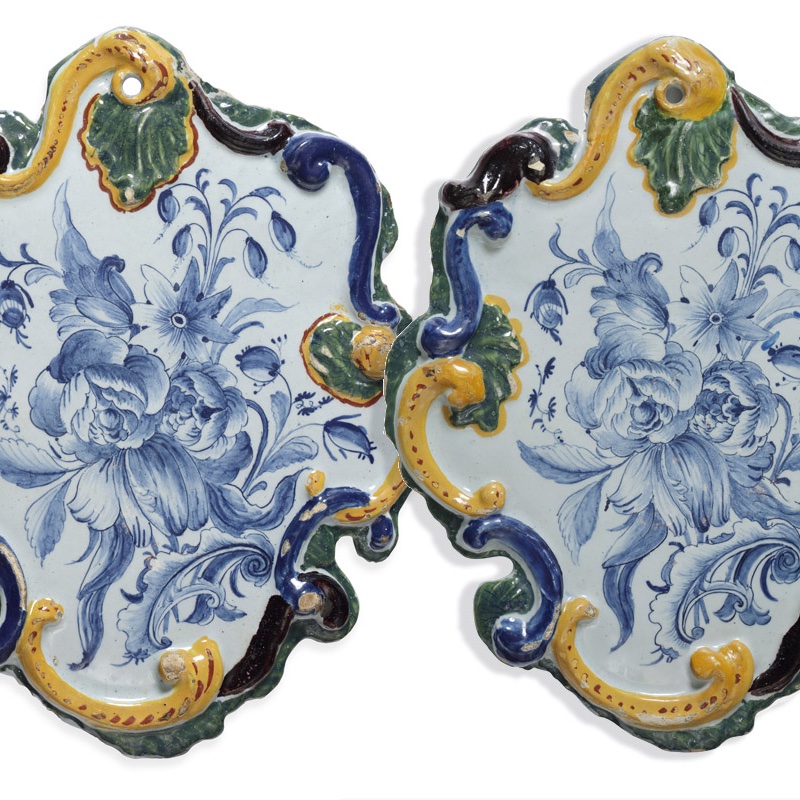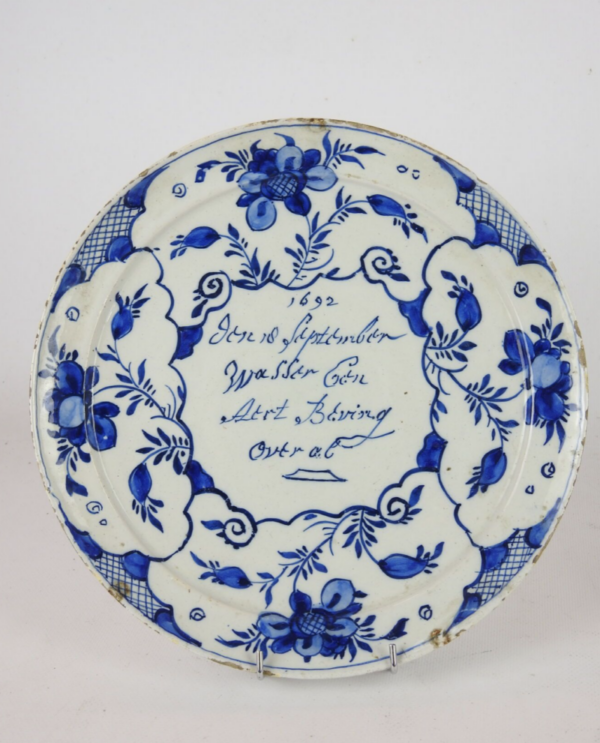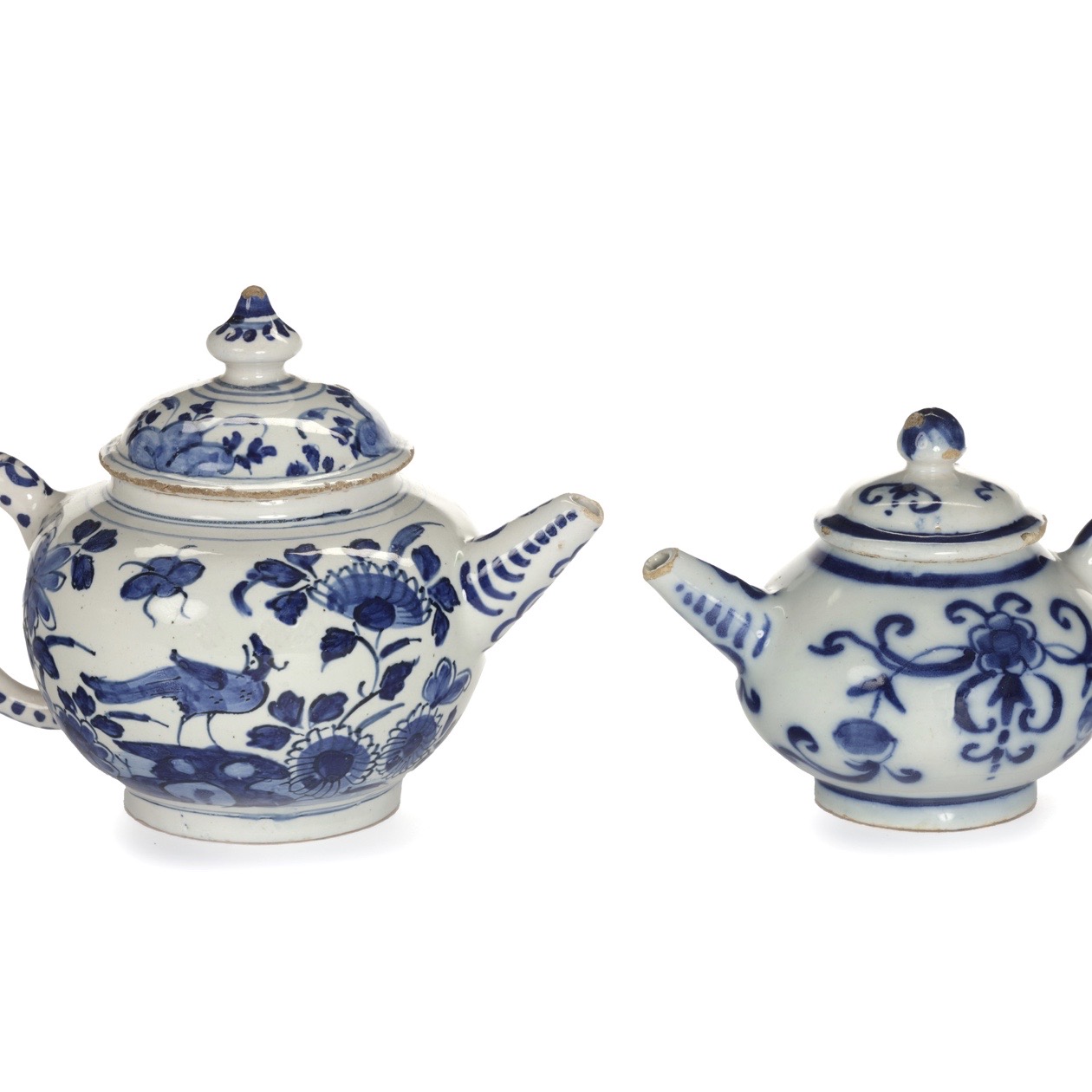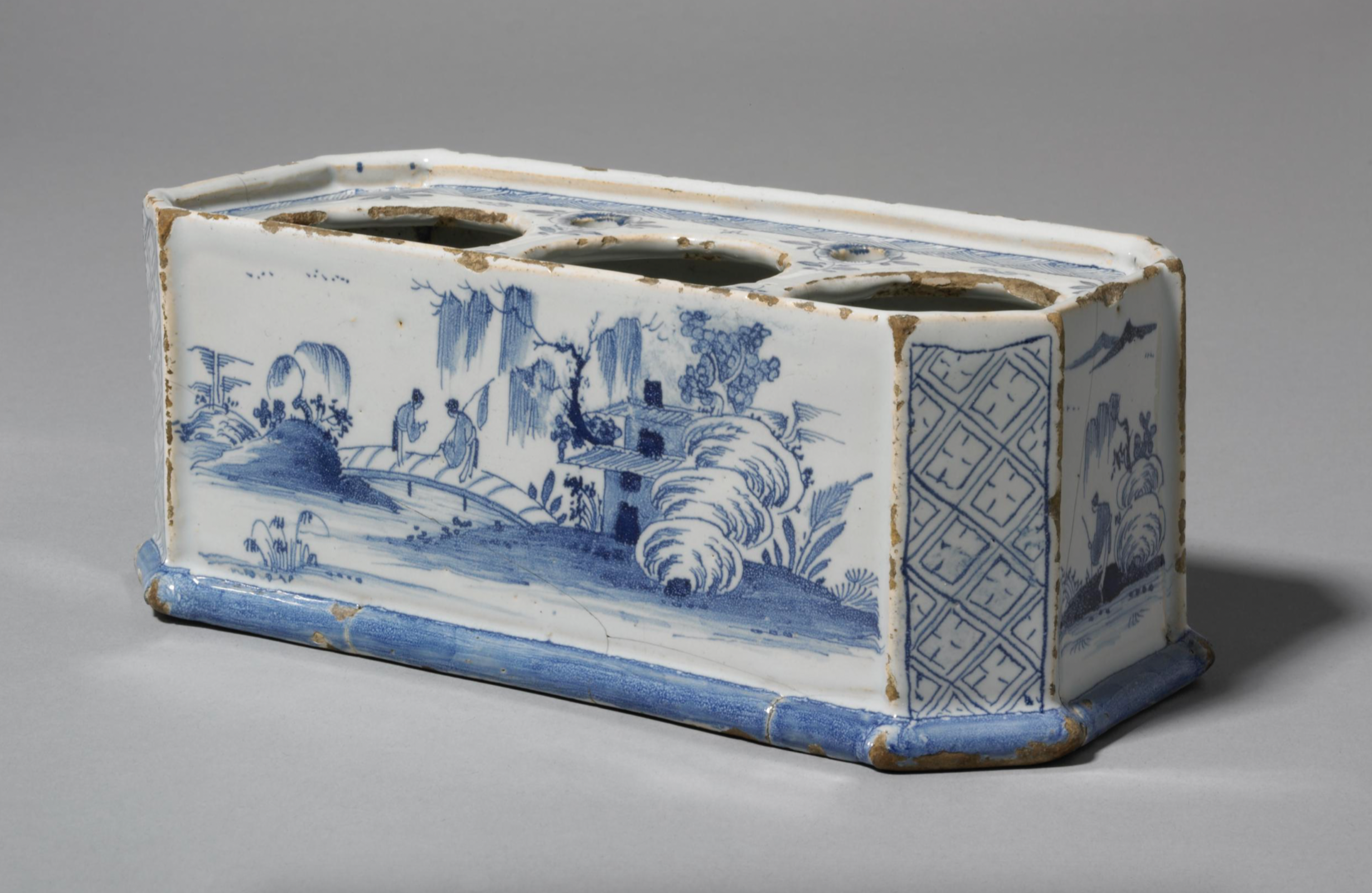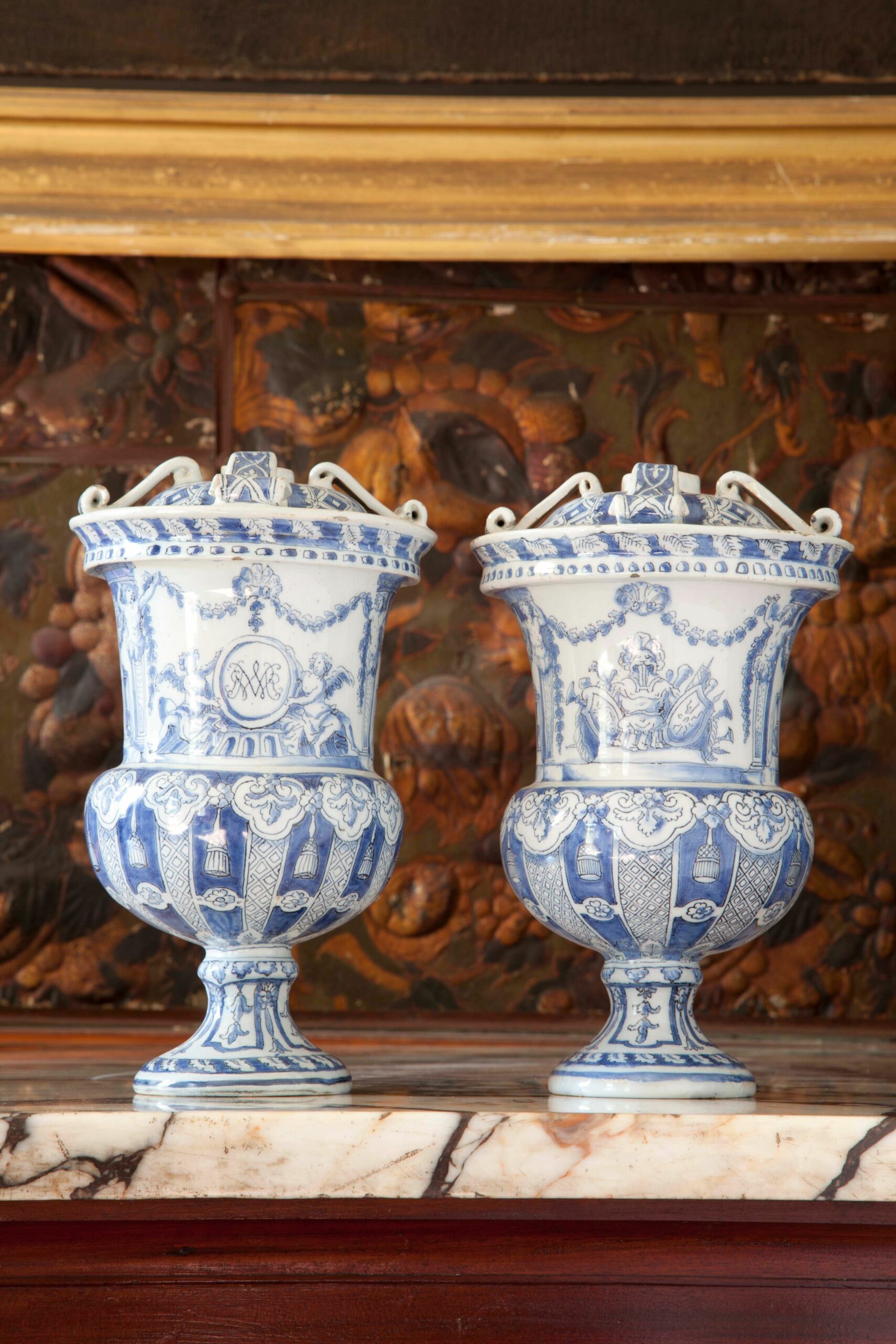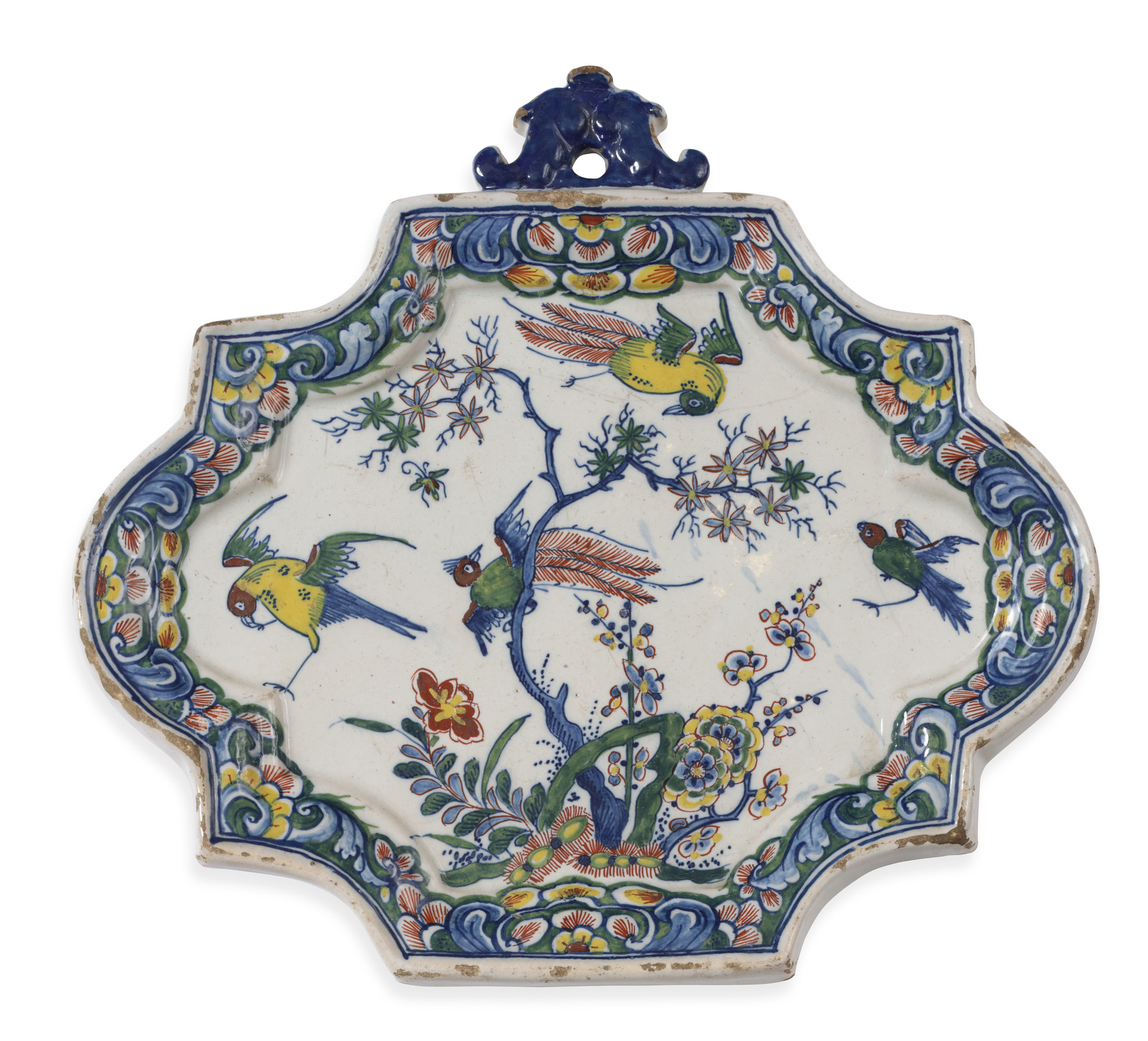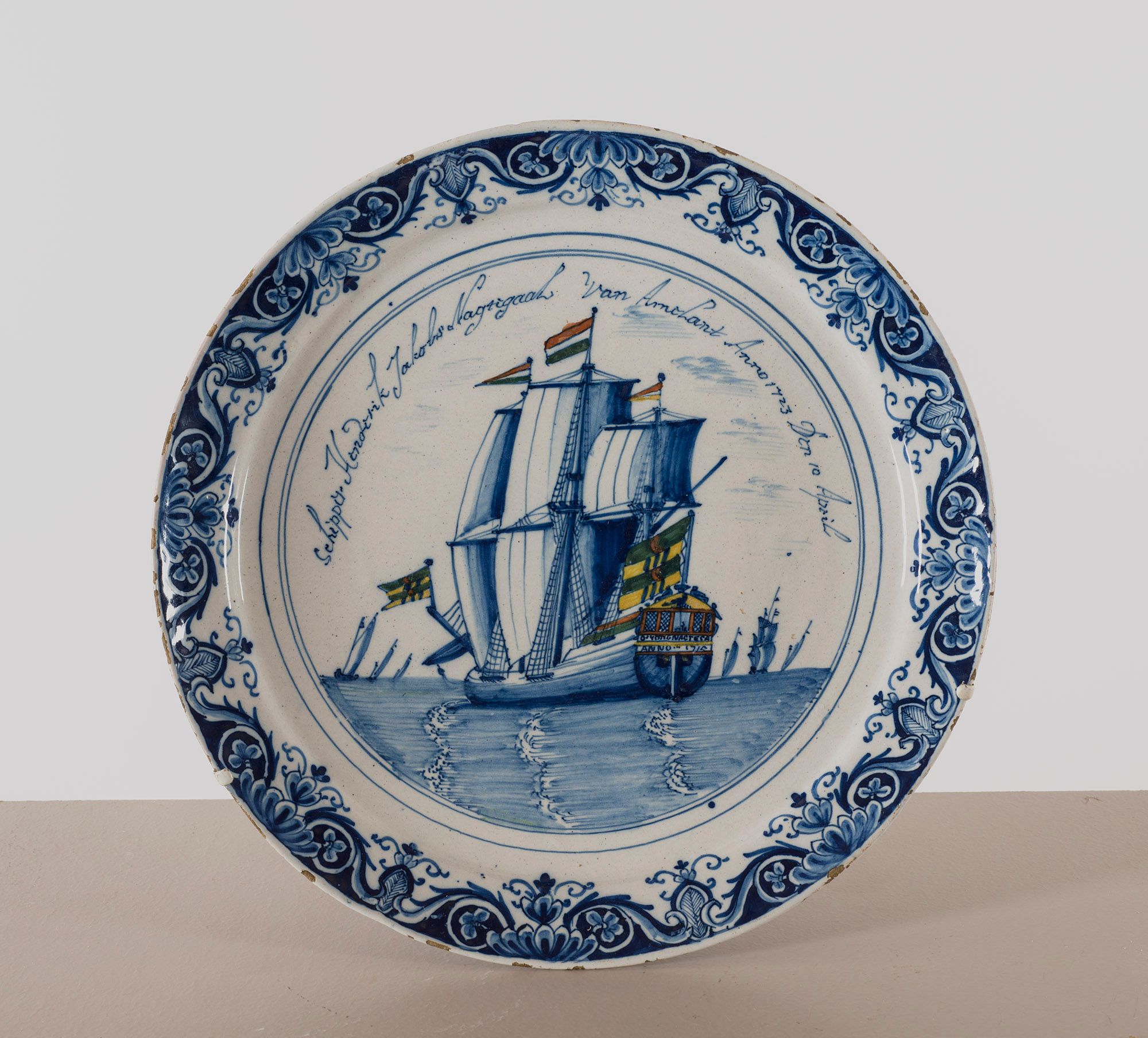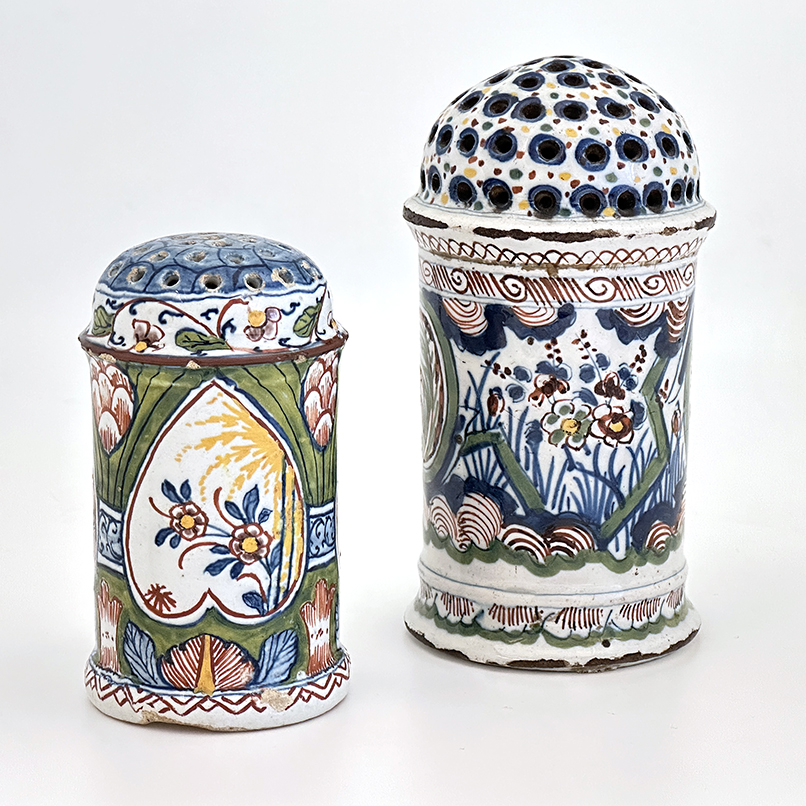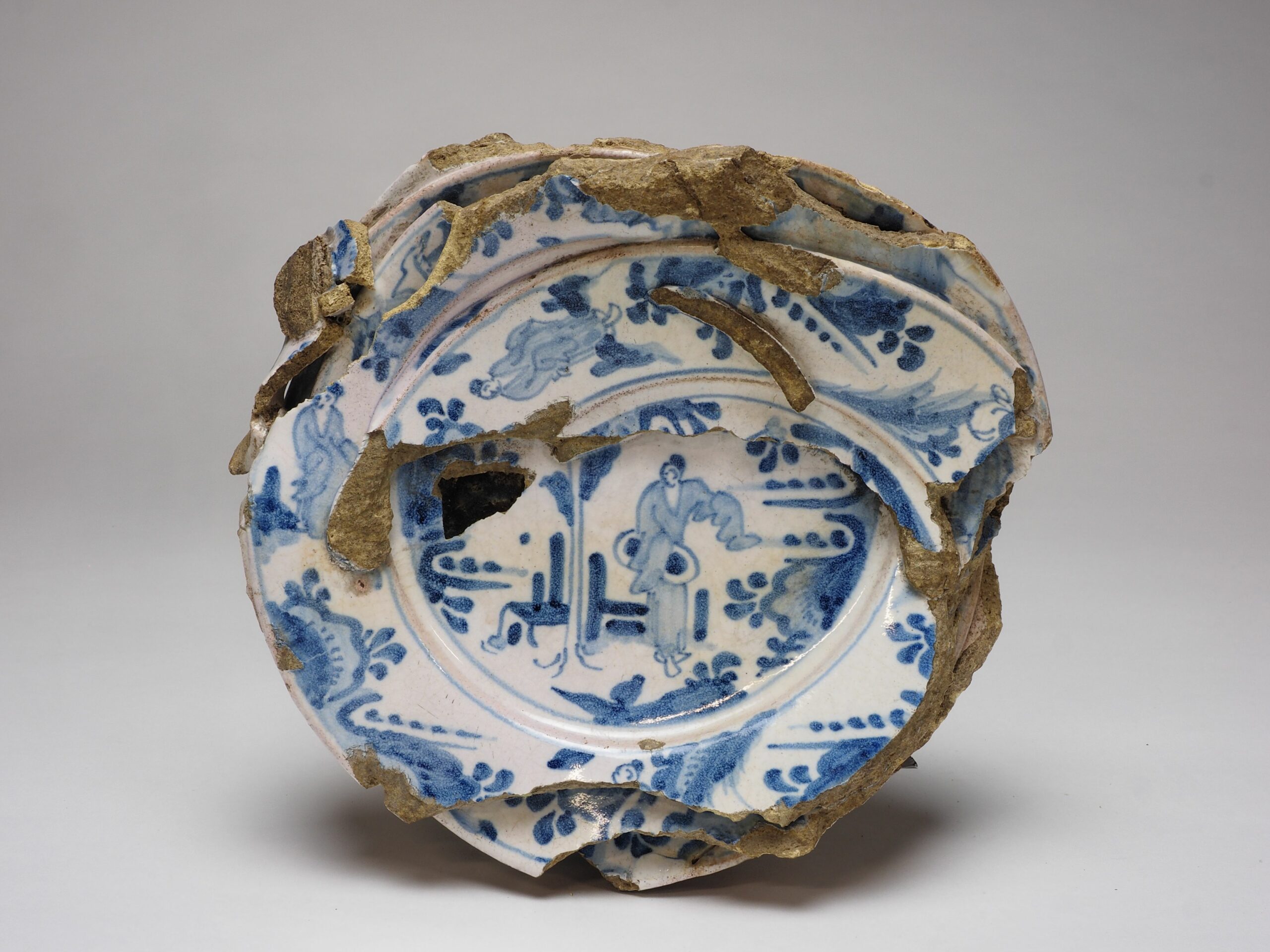Pair of Polychrome Cartouche Shaped Plaques
Every month we present you a special object from the Aronson Antiquairs’ collection. This month, we would like to show you this Pair of Polychrome Cartouche Shaped Plaques from circa 1790. The “porcelain paintings,” as they were referred to in household inventories, were intended to be admired as if they were paintings on panel, canvas…

